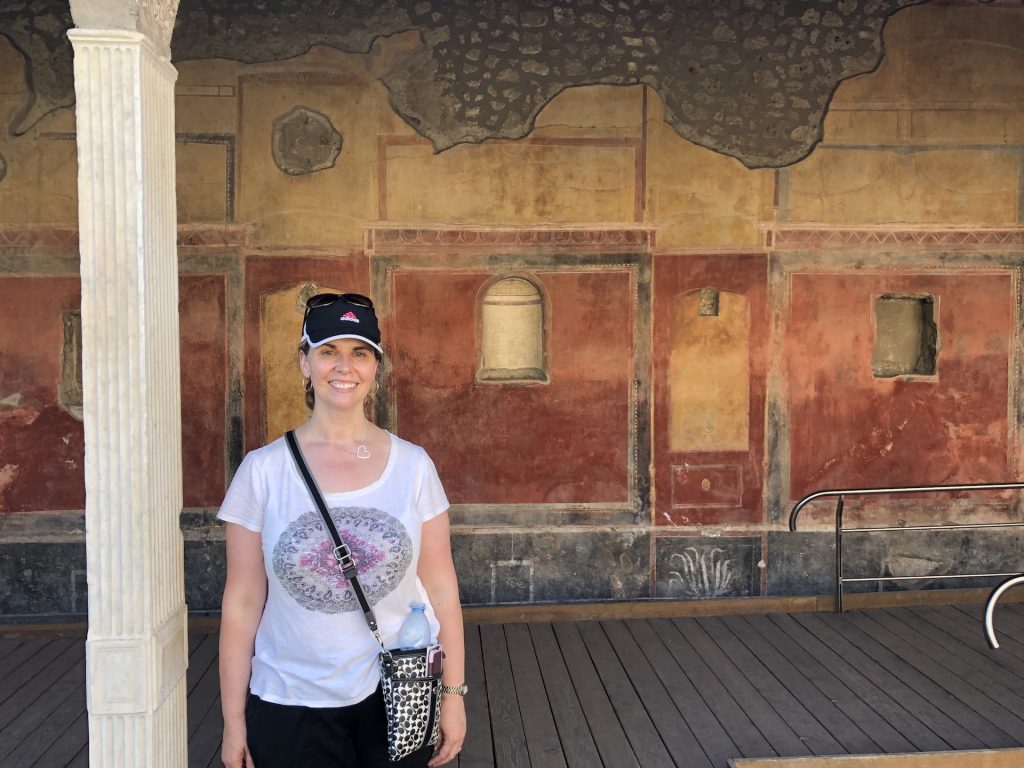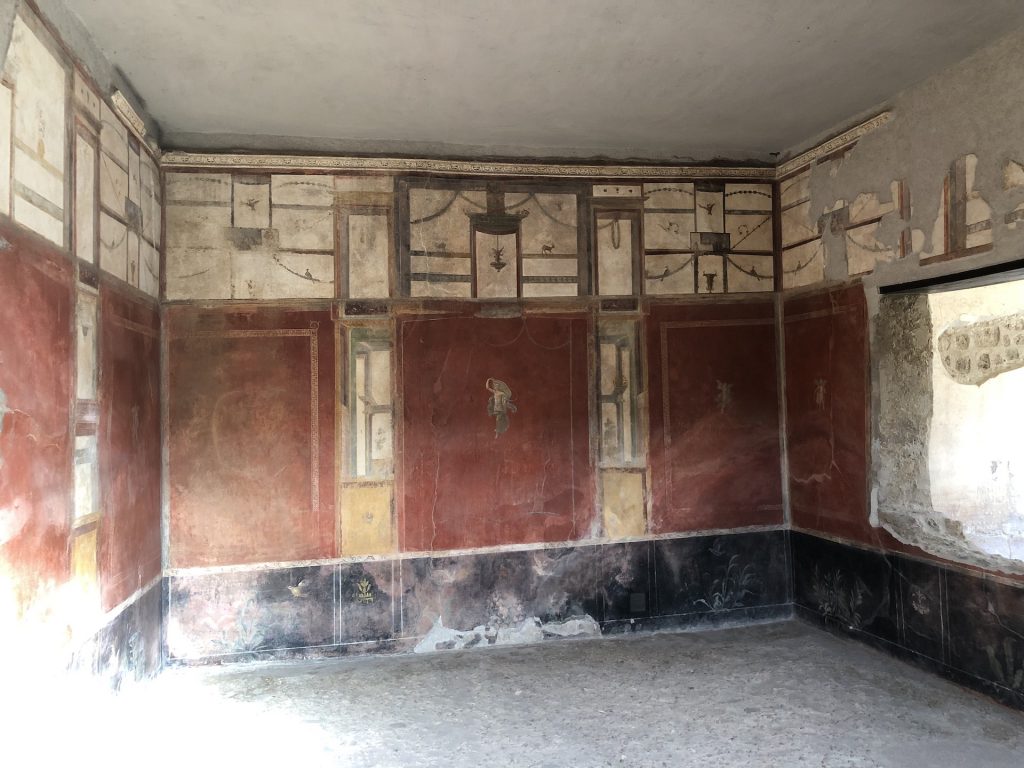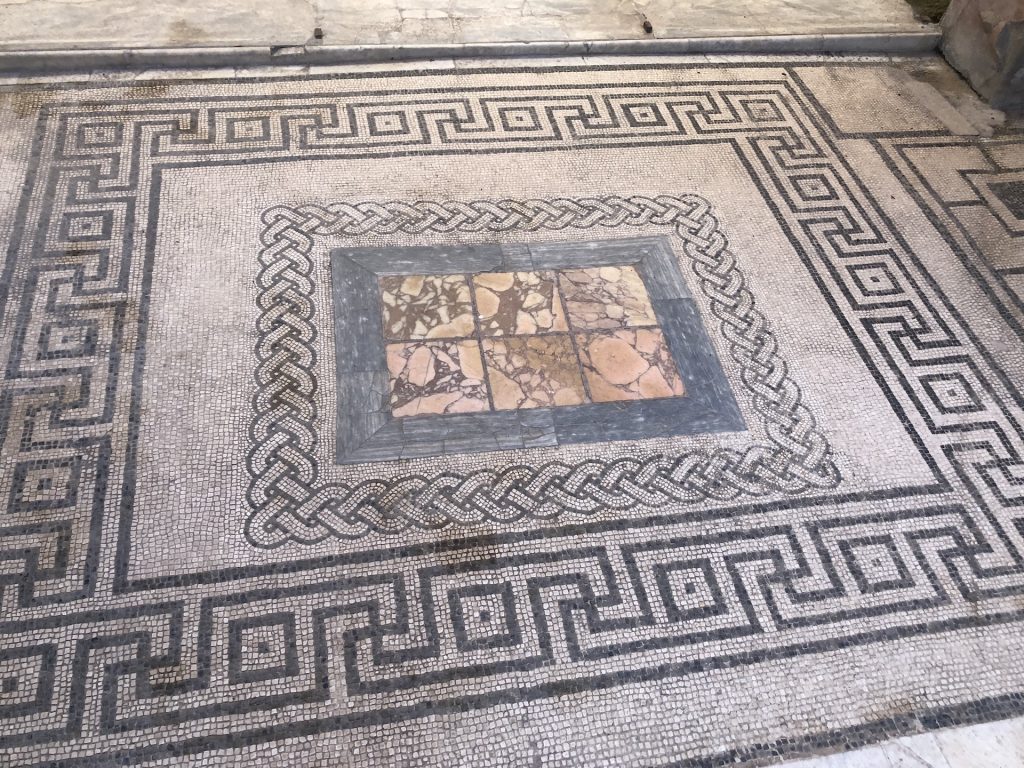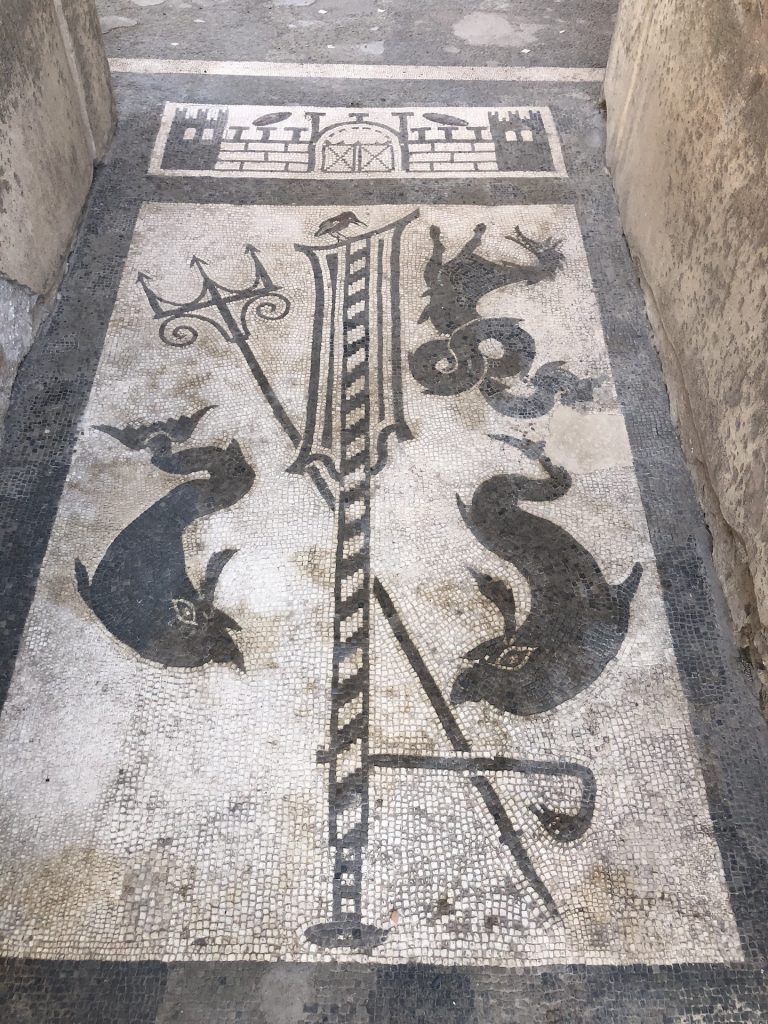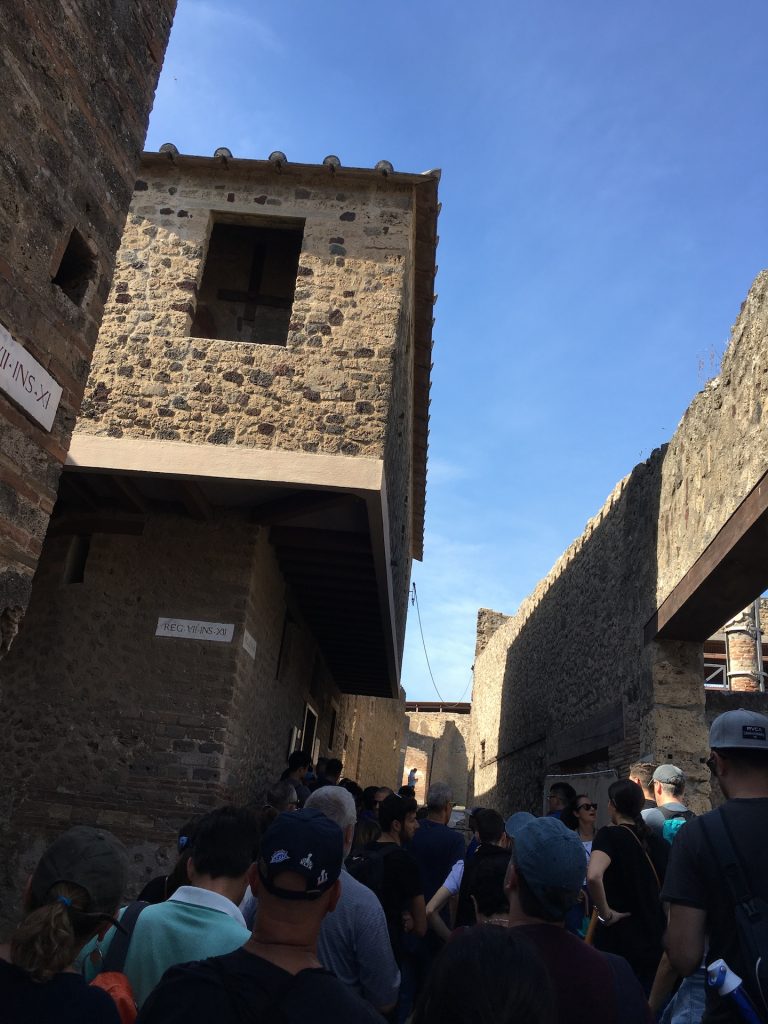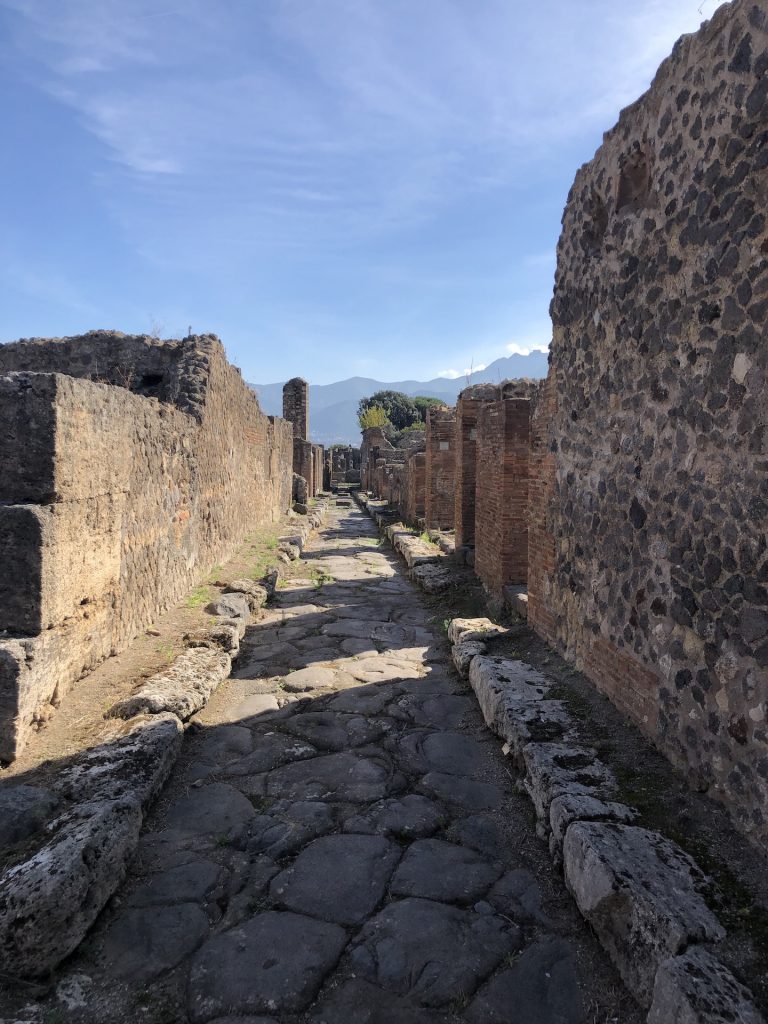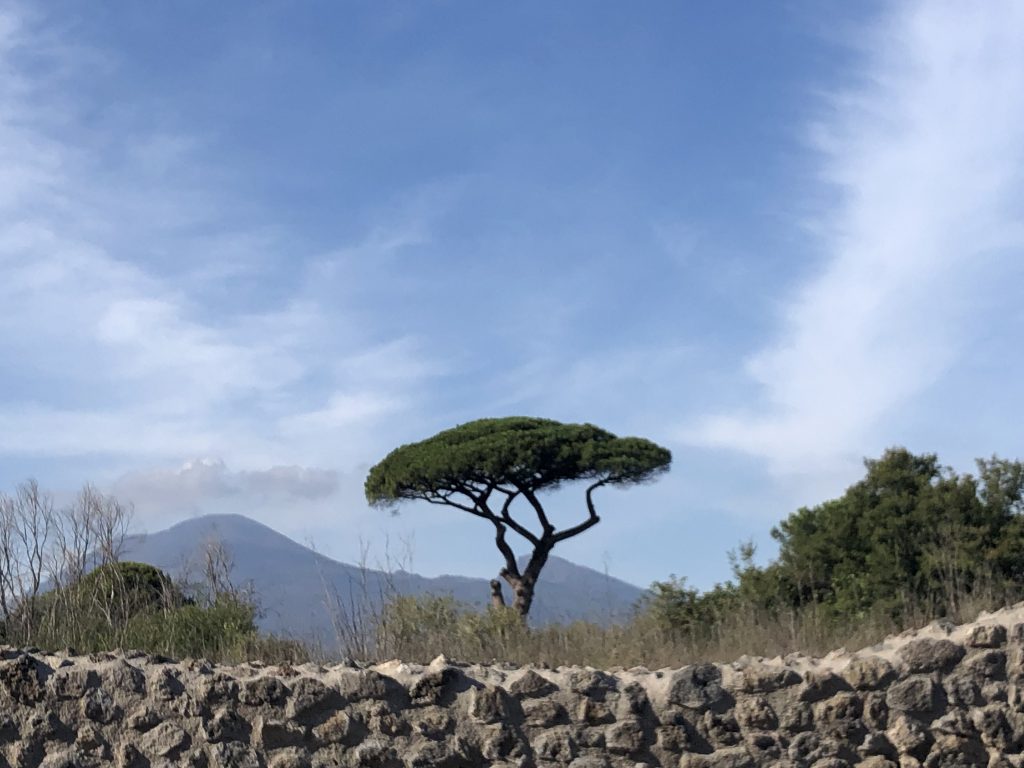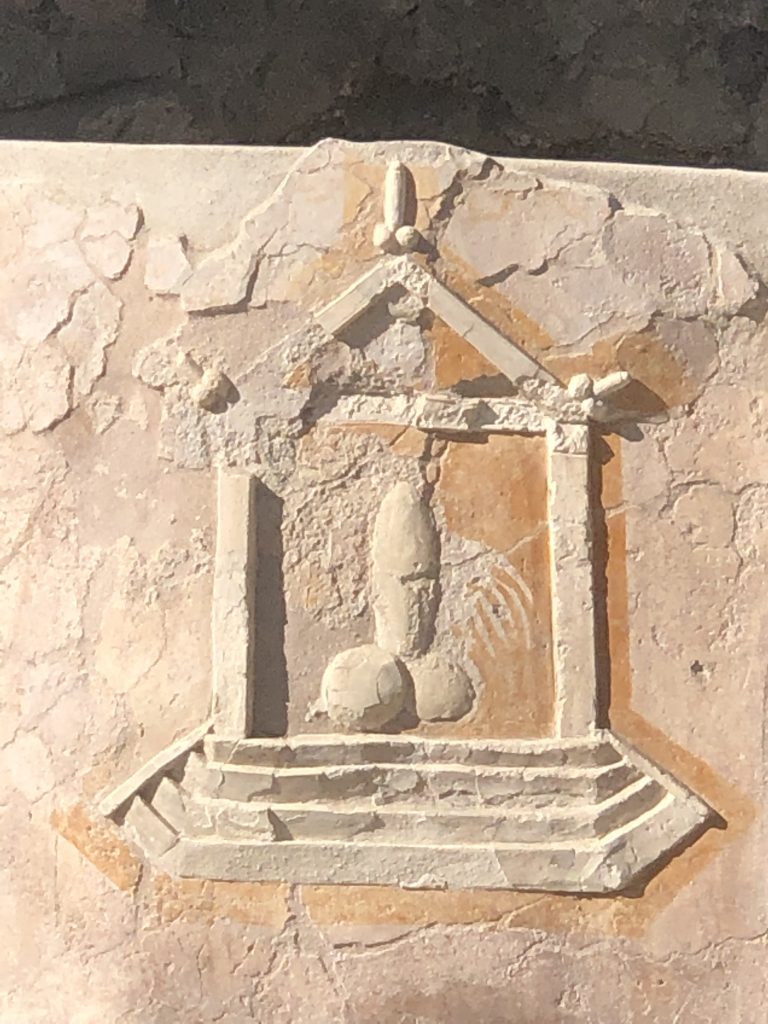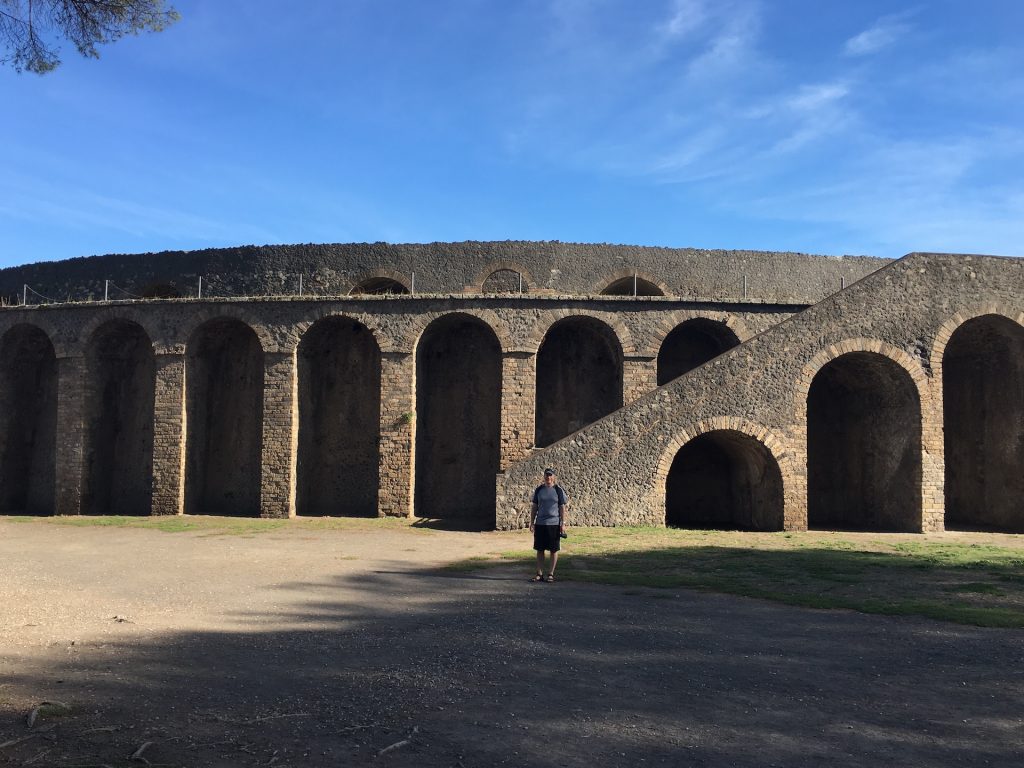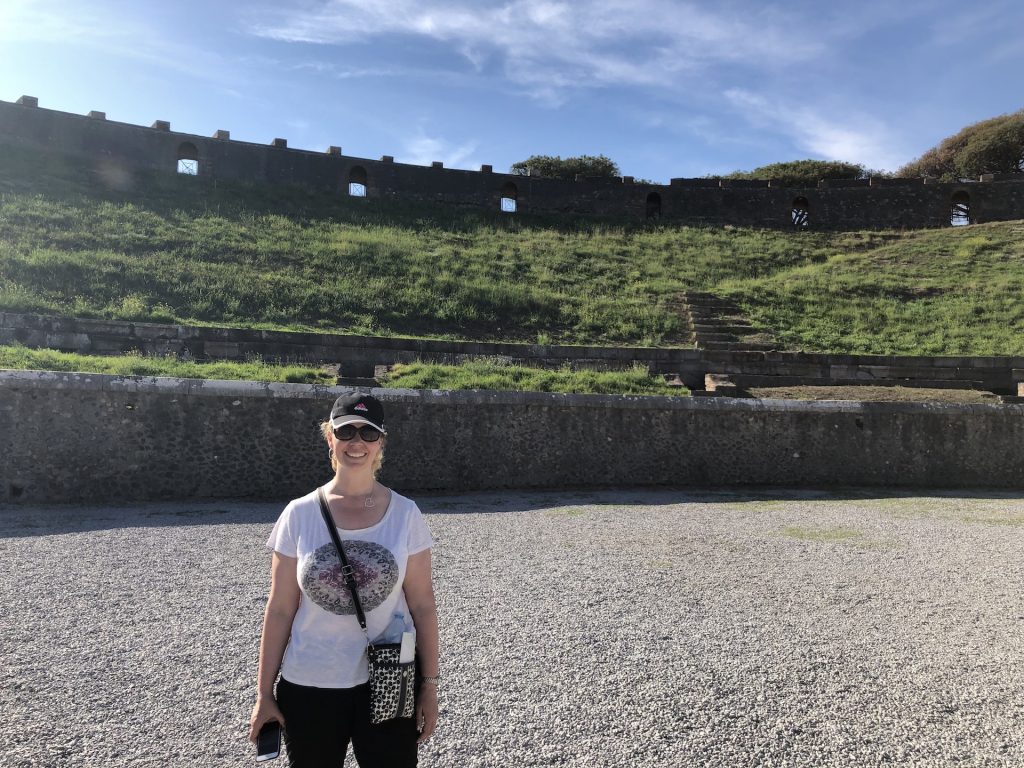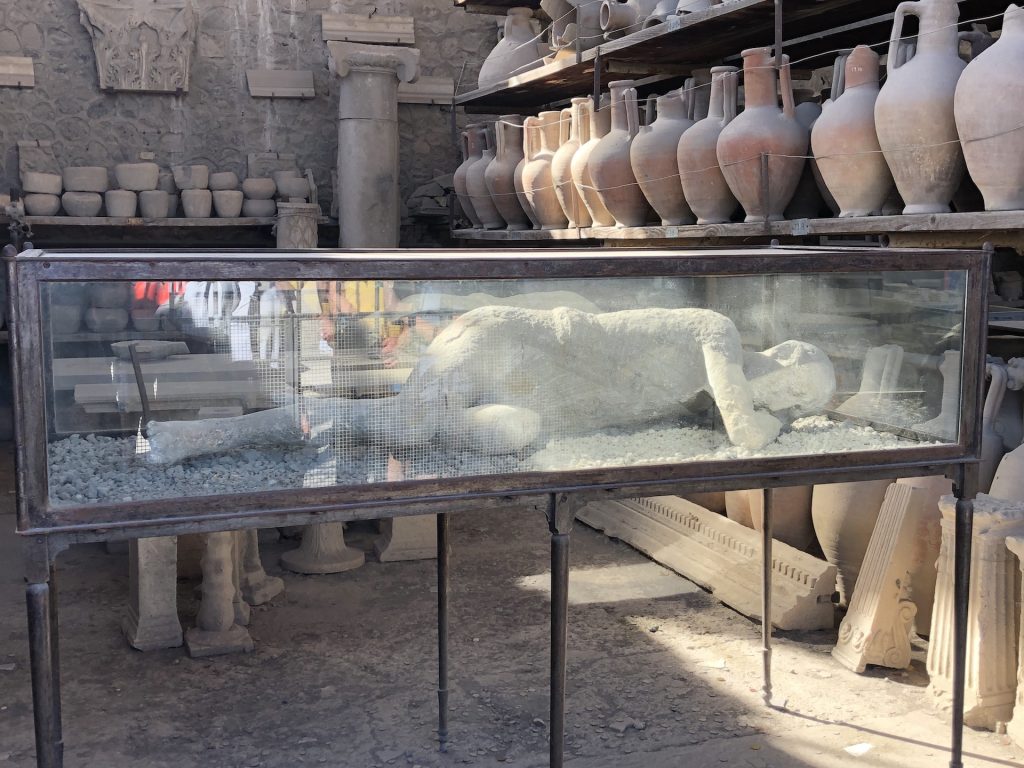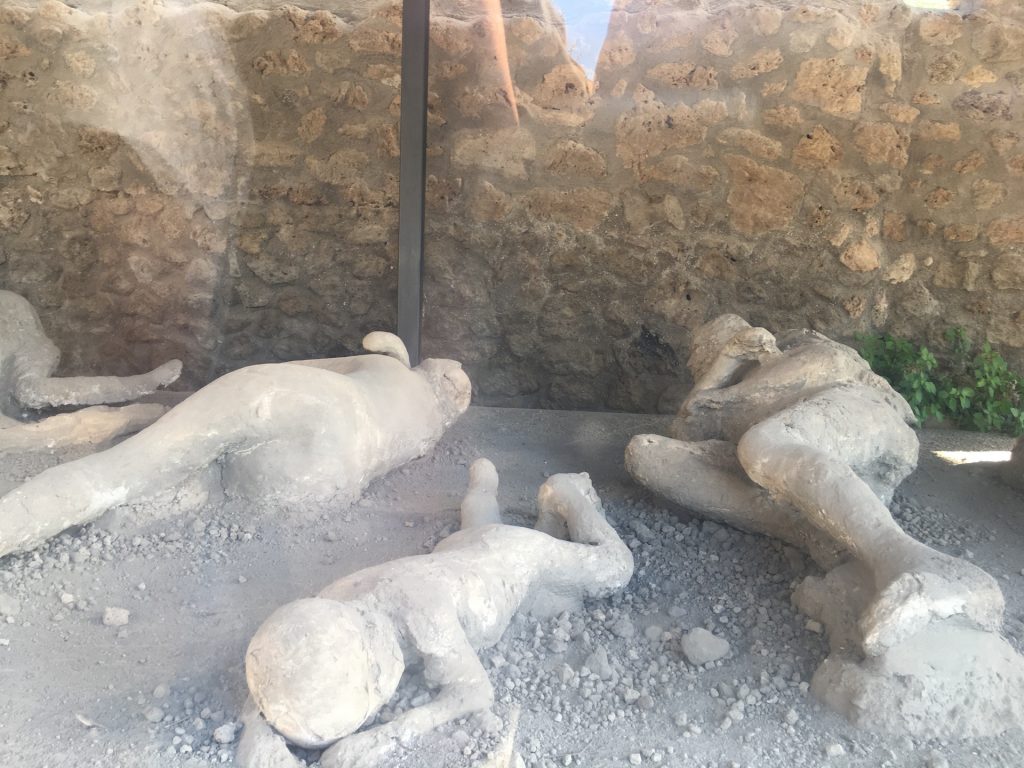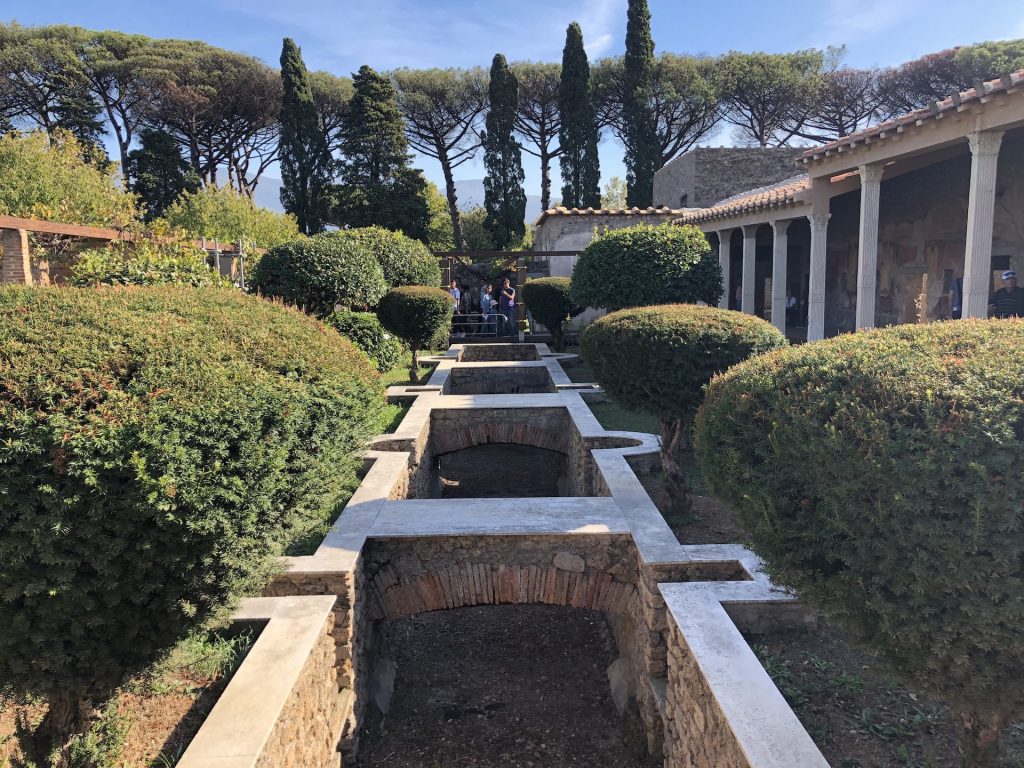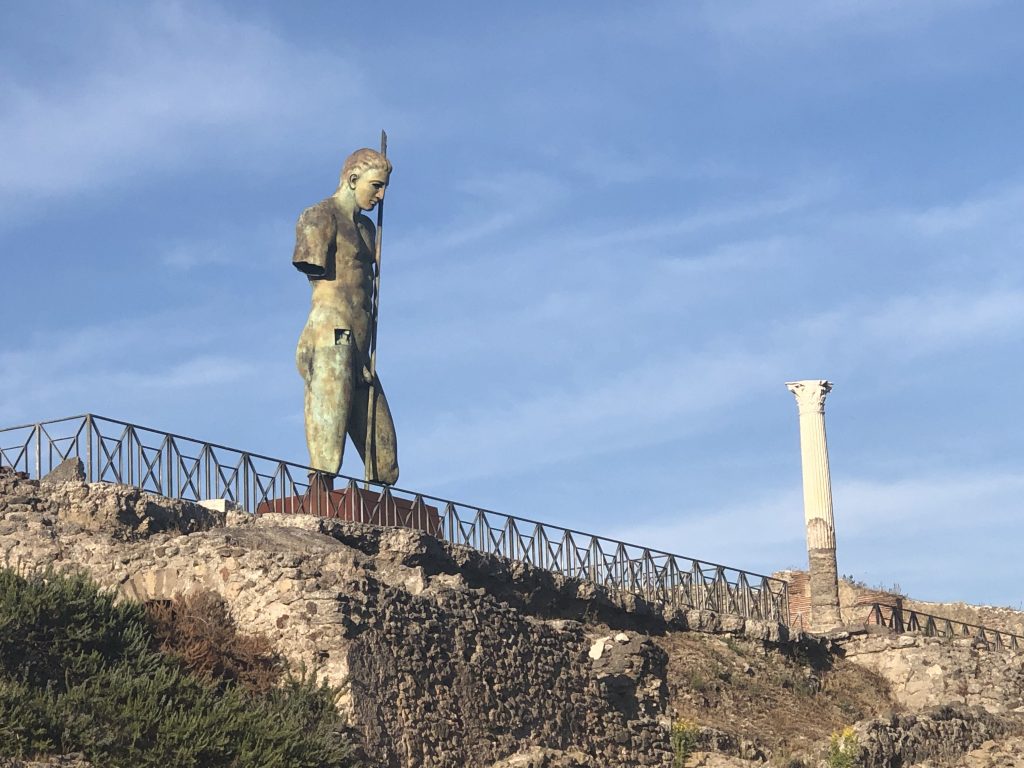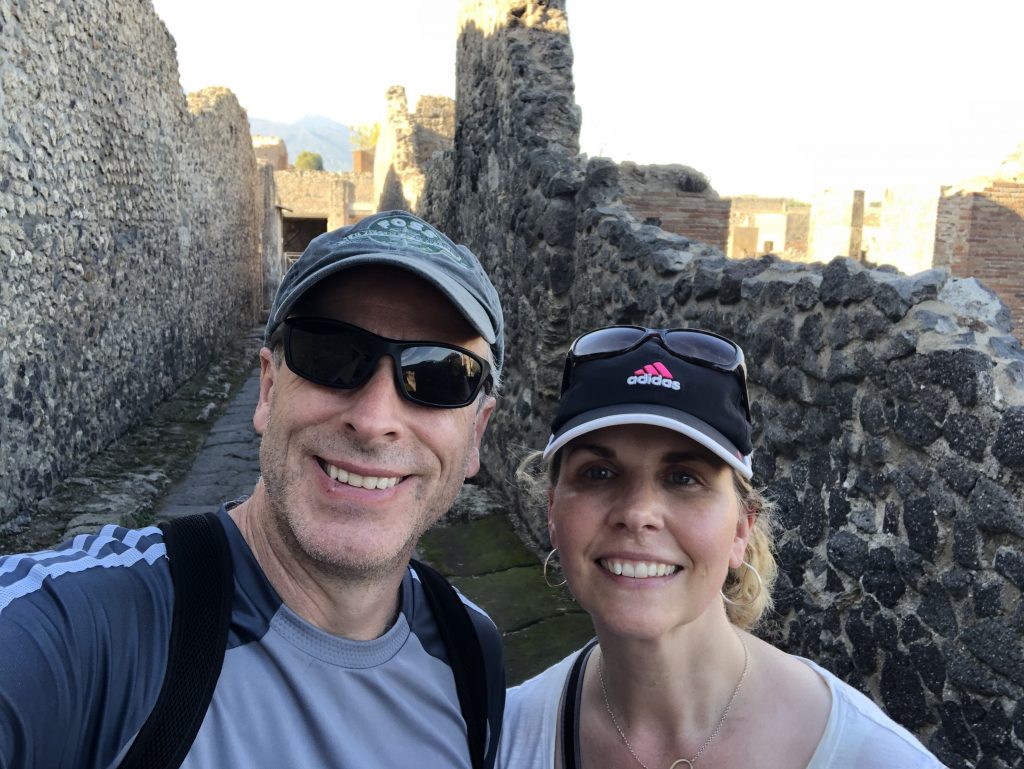Pompeii
Taking the Fresh Prince train about 30 minutes back towards Naples, the remains of Pompeii rise up right next to the station (all of which is further surrounded by the modern city of Pompei). The excavation covers 170 acres and there are constant stream of guided tours for us to join in on. Otherwise, for a high profile tourist attraction, there are surprisingly few hawkers trying to sell you useless trinkets.
We start with some history of the city which, prior to the eruption that buried it in 79 AD, was a valuable port, conquered by several civilizations before finally ending up as part of the Roman Empire. A significant earthquake had damaged much of the city in 62 AD, and it was rebuilt over the intervening 17 years only to be completed destroyed along with several neighboring cities such as Herculaneum. While most of the population was killed by the the intense heat from the blast (up to 480 °F), anyone fortunate (or unfortunate) enough to survive soon found themselves crushed by up to 80 feet of ash and stone that rained done for six hours.
For the most part, Pompeii faded from history until the late 1500s, when it was rediscovered by workmen digging a channel. Over the next 400 years, various excavations and restorations took place leaving what we are able to see today.
On our tour, we see a number buildings that were bakeries and restaurants, homes, and baths. The walls are still painted and the mosaic floors are as they were nearly two thousand years ago.
There is even a brothel, complete with a pictograph menu so clients who couldn’t speak the language wouldn’t feel left out. It is just as busy today as it probably was in 79 AD.
Once the tour is complete, we are free to explore our own. The site is huge and once you break away from the main tourist spots, it is easy to find entire streets all to yourself. It is both amazing and a little unsettling at the same time.
In our travels, my fellow adventurer and I often come across things that speak to our different personalities. Here are two examples from today. Can you guess who picked each one?
Yes, I sure do love that tree.
At the far end of the excavation is the original amphitheater, one of the earliest ever built (Pompeii was already underground when the Colosseum in Rome was completed). The seating areas are mostly grown over but you can still feel a little of what it must have been like for someone standing in the center of the arena, in front of 15,000 cheering Romans.
The most somber part of Pompeii are the plaster casts, showing some of the residents, including children, that never survived the eruption. Because the bodies were buried in ash and rock, as they decomposed, they left detailed cavities in the ground. Archaeologists were able to fill these voids with plaster as they excavated, with the resulting casts capturing the expressions on the victims’ faces as they died.
We poke around a few more corners of the city before calling it a day. There’s still more to see, but after a while your brain just won’t take any more in.
